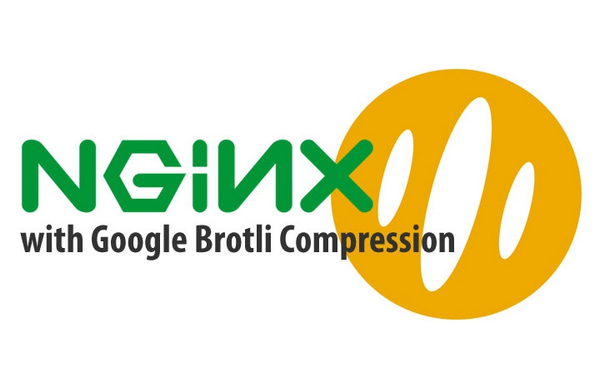Enabling Brotli Compression in Nginx to Reduce Page Size and Improve Website Loading Speed
Publish: 2019-03-21 | Modify: 2019-03-21
Google believes that the time of Internet users is valuable, and their time should not be wasted on long web page loading times. Therefore, in September 2015, Google introduced the lossless compression algorithm Brotli. Brotli uses a variant of the LZ77 algorithm, Huffman coding, and second-order text modeling to compress data, and it has higher compression efficiency compared to other compression algorithms.

Key Features of Brotli
- For common web resources, Brotli offers a 17-25% improvement in performance compared to Gzip.
- When Brotli compression level is set to 1, it achieves higher compression ratio than Gzip compression level 9 (highest level).
- Brotli still provides very high compression ratio when processing different HTML documents.
Compiling and Installing ngx_brotli Module for Nginx
Nginx does not support the ngx_brotli module by default, so it needs to be compiled separately. Here is the compilation method:
# Download Brotli first
git clone https://github.com/google/ngx_brotli.git
# Enter the directory
cd ngx_brotli
# Update Brotli
git submodule update --init
# Go to the Nginx source code directory
cd xxx/nginx
# Generate the makefile (add the module based on your own usage)
./configure ... --add-module=../ngx_brotli
# Compile Nginx
make && make installIf there are no compilation errors, you can see the ngx_brotli module by entering nginx -V, as shown in the screenshot below.

Enabling ngx_brotli Support
To enable Brotli compression, modify nginx.conf and add the following content within the http section:
# Enable Brotli compression
brotli on;
# Compression level, ranging from 0 to 11. The default value is 6. Setting it too high may consume additional server CPU.
brotli_comp_level 6;
# Set the minimum response size in bytes for compression
brotli_min_length 512;
# Specify which MIME types to compress
brotli_types text/plain text/javascript text/css text/xml text/x-component application/javascript application/x-javascript application/xml application/json application/xhtml+xml application/rss+xml application/atom+xml application/x-font-ttf application/vnd.ms-fontobject image/svg+xml image/x-icon font/opentype;
# Whether to allow looking up precompressed .br files. Possible values are on, off, and always.
brotli_static always;Finally, don't forget to reload Nginx to make it effective: nginx -s restart.
Additional Notes
The content encoding type used by browsers that support Brotli compression algorithm is br. For example, the Accept-Encoding value in the request header of Chrome browser (only when using HTTPS) is as follows:
Accept-Encoding: gzip, deflate, sdch, brIf the server supports Brotli algorithm, it will return the following response header:
Content-Encoding: brBrotli and Gzip can coexist, so it is recommended to enable both compressions. In the case where some older browsers do not support Brotli, it will automatically degrade to Gzip for processing.
References
Comments

xiaoz
I come from China and I am a freelancer. I specialize in Linux operations, PHP, Golang, and front-end development. I have developed open-source projects such as Zdir, ImgURL, CCAA, and OneNav.
Random article
- ImgURL (www.imgurl.org) launches expanded code service, limited time offer 9.9 yuan/year
- iFLYTEK's AI iFLYTEK Starfire is now available for application.
- Improving Zoho Mail's Sending and Receiving Speed with Nginx Port Forwarding
- 2 Free and User-friendly Compression Software for Windows: 7-Zip & Bandizip
- My Real Experience of Applying for Hong Kong and Macau Travel Permit in Chengdu
- Backblaze B2: Affordable Object Storage with CloudFlare CDN Integration
- Enable Gravatar Avatar Cache to Resolve Slow WordPress Loading
- Pcloud Double 11 Promotion: 75% Off
- MarkdownPad: A Windows Markdown Editor
- Special Offer on Bandwagonhost for Double 11: 2 Cores, 2GB RAM, 40GB SSD, $29/year [Sold Out]